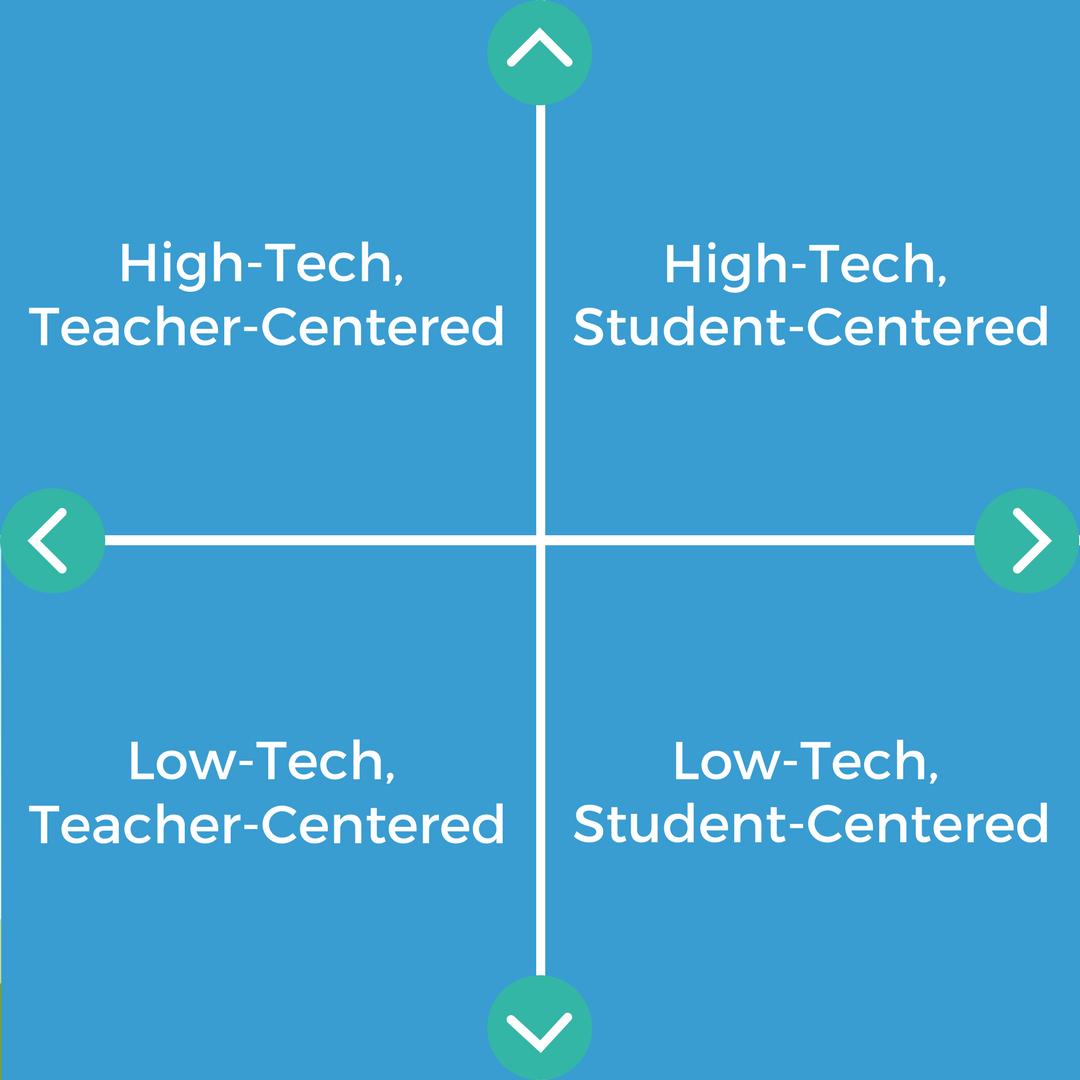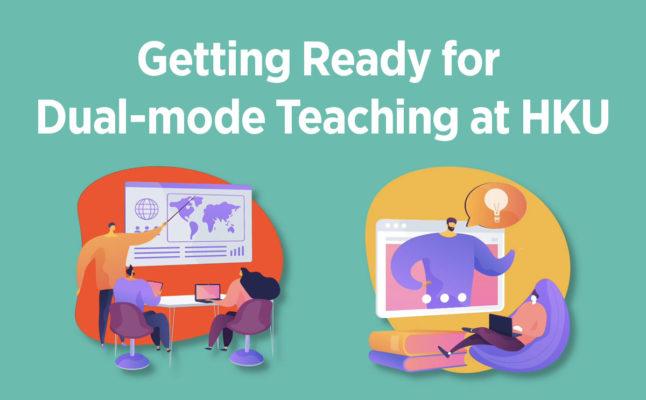Introductio
Theterm"model"isaChinesetranslationofEnglishmodel.Modelisalsotranslatedas"model","paradigm","typical"andsoon.Generallyreferstothetheoreticallogicalframeworkoftheresearchedobject,akindofoperableknowledgesystembetweenexperienceandtheory,andatheoreticalsimplifiedstructurethatreproducesreality.ThefirsttointroducethetermmodeltotheteachingfieldandsystematicallystudyitisB.JoyceandM.WeilintheUnitedStates.
JoyceandWeirthinkinthebookTeachingMode:"Theteachingmodeisaparadigmorplanthatconstitutescoursesandassignments,selectsteachingmaterials,andremindsteachersofactivities."TheactualteachingmodedoesnotItisnotaplan,becausetheplantendstobetoospecificandoperational,thuslosingitstheoreticalcolor.Theintroductionoftheterm"model"intoteachingtheoryistoexplainthebasicstructureorframeworkofvarioustypesofteachingactivitiesestablishedundertheguidanceofcertainteachingideasorteachingtheories,andtoexpresstheproceduralstrategiesoftheteachingprocesssystem.
Structure
Theteachingmodelusuallyincludesfivefactors,andtheregularrelationshipbetweenthesefivefactorsisthestructureoftheteachingmodel.
Classification
Withregardtotheclassificationofeducationmodels,scholarsathomeandabroadhavedifferentclassificationsfromdifferentperspectives.Accordingtothetheoryandrootsoftheteachingmodel,JoyceandWilldistinguishedfourtypesofteachingmodels:1.Informationprocessingteachingmodel2.Personality(humanity)developmentteachingmodel3.Socialinteractionteachingmodel4.Behaviormodificationteachingmodel.
TherearealsomanyclassificationsofteachingmodelsinChina.Someresearchersdividetheteachingmodelintothreecategories.Oneistheteachingmodelinwhichteachersandstudentssystematicallyteachandlearnbookknowledge,theotheristheteachingmodelinwhichteachersguidestudentstolearnbythemselvesfromactivities,andtheotherisacompromisebetweenthetwo.Theteachingmodeamongthestudents.
Theoreticalbasis
Theteachingmodeisareflectionofacertainteachingtheoryorteachingthought,andisastandardofteachingbehaviorguidedbyacertaintheory.Differenteducationalviewsoftenproposedifferentteachingmodels.Forexample,thetheoreticalbasisoftheconceptacquisitionmodelandtheadvancedorganizationmodelisthelearningtheoryofcognitivepsychology,whilethetheoreticalbasisofthecontextualizationmodelistherelationshipbetweenhumanconsciousandunconsciousmentalactivities,andintellectualandemotionalactivitiesincognition.Unite.
Teachinggoals
Anyteachingmodelpointstoandcompletesacertainteachinggoal.Inthestructureoftheteachingmodel,theteachinggoalisatthecoreandplaysaroleinotherfactorsthatconstitutetheteachingmodel.Restrictivefunction,whichdeterminestheoperatingproceduresoftheteachingmodeandthecombinedrelationshipbetweenteachersandstudentsinteachingactivities,andisalsothestandardandyardstickforteachingevaluation.Itispreciselybecauseofthestronginternalunityofteachingmodeandteachinggoalthatdeterminestheindividualityofdifferentteachingmodes.Differentteachingmodesservetoaccomplishcertainteachinggoals.
Operatingprocessus
Eachteachingmodehasitsownspecificlogicalstepsandoperatingprocedures.Itstipulateswhatteachersandstudentsdofirstandwhattodolaterintheteachingactivities.Thetasksthatthestepsshouldaccomplish.
Realizationconditions
refertothevariousconditionfactorsthatcanmaketheteachingmodeeffective,suchasteachers,students,teachingcontent,teachingmethods,teachingenvironment,teachingtimeandsoon.
Teachingevaluation
Teachingevaluationreferstotheevaluationmethodsandstandardsthatareuniquetovariousteachingmodesforcompletingteachingtasksandachievingteachinggoals.Duetothedifferentteachingtaskstobecompletedandtheteachinggoalstobeachievedbydifferentteachingmodes,theproceduresandconditionsusedaredifferent,ofcourse,themethodsandstandardsofevaluationarealsodifferent.Exceptforsomerelativelymatureteachingmodelsthathaveformedasetofcorrespondingevaluationmethodsandstandards,manyteachingmodelshavenotyetformedtheirownuniqueevaluationmethodsandstandards.
Characteristicsoftheteachingmode
Directivity
Becauseanyteachingmodeisdesignedaroundacertainteachinggoal,andeachteachingmodeiseffectiveApplicationalsorequirescertainconditions,sothereisnouniversalmodelapplicabletoanyteachingprocess,norcanitbesaidthatwhichteachingmodelisthebest.Thecriterionforevaluatingthebestteachingmodeisthemosteffectiveteachingmodethatachievesaspecificgoalundercertaincircumstances.Whenchoosingateachingmodeintheteachingprocess,wemustpayattentiontothecharacteristicsandperformanceofdifferentteachingmodes,andpayattentiontothedirectionalityoftheteachingmode.
Operational
Theteachingmodeisaconcreteandoperationalteachingthoughtortheory,whichusesasimplifiedformofthecorepartofacertainteachingtheoryoractivitymethodReflected,itprovidespeoplewithamoreabstracttheoreticalframeworkforteachingbehaviorthatismuchmoreconcrete,andspecificallystipulatestheteachingbehaviorofteachers,sothatteachershaverulestofollowintheclassroom,whichiseasyforteacherstounderstand,graspanduse.
Integritas
Theteachingmodeistheunityofteachingrealityandteachingtheoryconception,soithasacompletestructureandaseriesofoperationalrequirements,reflectingthetheoreticalself-justificationandprocessThereisabeginningandanend.
Stabilitas
Theteachingmodeisatheoreticalsummaryofalargenumberofteachingpracticeactivities,whichtoacertainextentrevealstheuniversallawsofteachingactivities.Undernormalcircumstances,theteachingmodedoesnotinvolvespecificsubjectcontent,andtheprovidedproceduresserveasageneralreferenceforteachingandhaveacertaindegreeofstability.However,theteachingmodeisbasedonacertaintheoryorteachingthought,andcertainteachingtheoriesandteachingthoughtsaretheproductsofacertainsociety.Therefore,theteachingmodeisalwaysrelatedtothesocialpolitics,economics,science,culture,andeducationofacertainhistoricalperiod.Thelevelconnectionisrestrictedbytheeducationalpolicyandeducationalpurpose.Therefore,thisstabilityisrelative.
Flexibilitas
Asateachingmodelthatisnotaimedatspecificteachingcontent,itreflectsacertaintheoryoridea,butalsoneedstobeoperatedinthespecificteachingprocess,intheprocessofapplicationItmusttakeintoaccountthecharacteristicsofthesubject,thecontentofteaching,theexistingteachingconditionsandthespecificconditionsofteachersandstudents,andmakesubtlemethodologicaladjustmentstoreflecttheactiveadaptationtothecharacteristicsofthesubject.
Thefunctionofteachingmode
1.Theintermediaryroleoftheteachingmodel
Theintermediaryroleoftheteachingmodelreferstoamodelteachingmethodsystemthatcanprovideacertaintheoreticalbasisfortheteachingofvarioussubjects,sothatteacherscangetridofonlyrelyingonexperienceandfeelings,Exploringtheteachingsituationfromthebeginninghasbuiltabridgebetweentheoryandpractice.
Themediatingroleoftheteachingmodelisinseparablefromitscharacteristicsthatitisderivedfrompracticeandisasimplifiedformofacertaintheory.
Ontheonehand,theteachingmodeisderivedfrompractice.Itistheresultofoptimizing,generalizing,andprocessingcertainspecificteachingactivities.Itisforacertaintypeofteachingandthevariousfactorsinvolvedandbetweenthem.Theinter-relationshipprovidesarelativelystableoperationalframework,whichhasaninherenttheoreticalbasisforlogicalrelationsandalreadyhastheoreticalsignificance.
Ontheotherhand,theteachingmodelisasimplifiedrepresentationofacertaintheory.Itcanreflecttheteachingtheoryonwhichitisbasedthroughconciseandconciseexplanationsofsymbolicsymbols,schemasandrelations.Thebasiccharacteristicsenablepeopletoformateachingproceduralimplementationprogramthatismuchmorespecificthanabstracttheoryintheirminds.Itisconvenientforpeopletounderstandacertainteachingtheory.Itisalsoanintermediatelinkforabstracttheorytoexertitspracticalfunction.Itisalsoanintermediaryforteachingtheorytospecificallyguideteachinganduseitinpractice.
2.Methodologicalsignificanceofteachingmode
Thestudyofteachingmodeisaninnovationinteachingresearchmethodology.Foralongtime,peoplehavebeenaccustomedtoadoptingasingleandrigidwayofthinkinginteachingresearch,andtheyhavepaidmoreattentiontotheuseofanalyticalmethodstostudythevariouspartsofteaching,whileignoringtheconnectionorrelationshipbetweenthevariousparts;orareaccustomedtostayingintherelationshipbetweenthevariouspartsTheabstractdialecticalunderstanding,butlacksthecharacteristicsandoperabilityasateachingactivity.Thestudyofteachingmodeguidespeopletocomprehensivelyexploretheinteractionbetweenthevariousfactorsintheteachingprocessanditsdiversifiedmanifestations,grasptheessenceandlawsoftheteachingprocessfromadynamicpointofview,andatthesametimestrengthentheteachingdesignandresearchTheoptimizedcombinationofteachingprocessalsohasacertainpromotingeffect.
Historicaldevelopment
Theteachingmodeisthebasicstructureofteachingactivities.Intheteachingwork,everyteacherconsciouslyorunconsciouslyteachesaccordingtoacertainteachingmode,buthereisAquestionofwhethertheexistenceyoutakeisscientificandreasonable.Understandingthehistoricaldevelopmentoftheteachingmodehelpspeoplelearnfromthetraditionandtheunderstandingofvariousnewcontemporaryteachingmodes,andhelpspeoplegraspthedevelopmenttrendoftheteachingmode.
Thesystematicandcompleteteachingmodelstartedfromtheformationofanindependentsystemofmodernpedagogy.Theconceptandtheoryof"teachingmodel"onlyappearedafterthe1950s.However,inChineseandforeignteachingpracticeandteachingideas,theprototypeoftheteachingmodelhasbeenformedveryearly.
Thetypicalmodeofancientteachingistheteachingstyle,anditsstructureis"speaking-listening-reading-remembering-practice".Itischaracterizedbyteachersinstillingknowledgeandstudentspassivelyandmechanicallyacceptingknowledge.Thetextinthebookisalmostthesameastheteacher’sexplanation,thestudents’answersareconsistentwiththebookorteacher’sexplanation,andthestudentslearnbymechanicalrepetition.
Inthe17thcentury,withtheintroductionofnaturalsciencecontentandintuitiveteachingmethodsinschoolteaching,andtheimplementationoftheclassteachingsystem,Comeniusproposedthatexplanations,questions,questionsandanswers,andexercisesshouldbeunifiedinclassroomteaching.Italsoincorporatesobservationandotherintuitiveactivitiesintotheteachingactivitysystem,andforthefirsttimeproposedateachingmodelwithaprogramstructureof"perception-memory-understanding-judgment".
The19thcenturywasaperiodofprosperityandprosperityforscientificexperiments.Herbart'stheoryreflectsthetrendofscientificdevelopmentatthattimetoaconsiderableextent.Startingfromthetheoryofperception,hestudiedthepsychologicalactivitiesofpeople,andbelievedthatintheprocessoflearning,studentscantrulymasterknowledgeonlywhenthenewexperiencehasformedaconnectionbetweentheconceptsinthepsychologicalperceptiongroup.Therefore,thetaskoftheteacheristoselectthecorrectmaterials,promptthestudentswithappropriateprocedures,andformtheirlearningbackgroundorcollectiveawarenessgroup.Startingfromthistheory,heproposedafour-stageteachingmodelof"Clear-Combined-System-Method".Later,hisstudentLeintransformeditintoafive-stageteachingmodelof"preparation-prompt-union-summary-application".
Theaboveteachingmodeshaveonethingincommon.Theyallignorethesubjectivityofstudentsinlearning,one-sidedemphasisonindoctrinationmethods,andtovaryingdegreessuppressandhinderthedevelopmentofstudents'personality.Therefore,inthe1820s,withthedevelopmentofthecapitalistindustryandthegeneralpenetrationandpopularityoftheideaofemphasizingthedevelopmentofindividuality,thetraditionalteachingmodelrepresentedbyHerbartwaschallenged,andDewey'spragmatismcameintobeing.Theeducationaltheoryof”hasbeenrespectedbythesociety,andatthesametime,ithaspromotedtheteachingmodeltomoveforward.
Deweyproposedapragmaticteachingmodelbasedon"learningbydoing"thatis"child-centered".Thebasicprocedureofthismodelis"creatingasituation-determiningtheproblem-possessinginformation-proposinghypotheses-testingthehypothesis".Thiskindofteachingmodebreakstheprevioustendencyofsingleteachingmode,makesupfortheinsufficiencyofHerbart'steachingmode,andemphasizesthemainroleofstudents.Emphasisonactivityteaching,promotestudentstodiscoverandexploreskills,acquiretheabilitytoexploreandsolveproblems,andopenupanewwayofmodernteachingmode.
Ofcourse,thepragmaticteachingmodelalsohasitsshortcomings.Itequatestheteachingprocesswiththescientificresearchprocess,depreciatestheteacher'sguidingroleintheteachingprocess,unilaterallyemphasizestheimportanceofdirectexperience,ignoresthesystematiclearningofknowledge,andaffectsthequalityofteaching.Therefore,itwasstronglycriticizedbythesocietyinthe1950s.
Sincethe1950s,withthedevelopmentofscienceandtechnology,educationisfacingthechallengeofanewtechnologicalrevolution,whichpromotespeopletousenewtheoriesandtechnologiestostudyschooleducationandteachingissues.Modernpsychologyandthinkingsciencerevealthemechanismofhumanbrainactivity,andepistemologysummarizestheprocessofindividualcognition.Cognitivepsychologyisthestudyofthehumanbrain’sacceptanceandselectionofinformationactivities,especiallysystemtheory,cybernetics,informationprocessingtheory,etc.Theemergenceofhasaprofoundimpactonteachingpractice,andalsoputforwardmanynewtopicsforteachingmode.Therefore,manyteachingideasandtheorieshaveappearedinthefieldofeducationatthisstage,andatthesametimemanynewteachingmodelshavebeenproduced.
Developmenttrend
1.Fromasingleteachingmodeltoadiversifiedteachingmodel
SinceHerbartproposedthe"four-stage"teachingmodel,throughthepracticeanddevelopmentofitsstudents,ithasgraduallybecomethenameofthe"traditionalteachingmodel"inthe20thcentury.Dominationofteachingmode.Later,underthebannerofanti-tradition,Deweyproposedapragmaticteachingmodel,whichhasbeenswingingbackandforthbetween"tradition"and"anti-tradition"sincethe1950s.Afterthe1950s,duetotheendlessemergenceofnewteachingideas,coupledwiththenewscientificandtechnologicalrevolution,teachinghasundergonegreatchanges,andtheteachingmodelhasaprosperoussituationof"ahundredflowersbloomingandahundredschoolsofthoughtcontending".AccordingtothestatisticsofJoyceandWeirin1980,thereare23teachingmodes,amongwhichtherearemorethan10teachingmodesproposedbyourcountry.
2.Frominductivetodeductiveteachingmodeldevelopment
Theinductiveteachingmodelemphasizessummarizingandsummarizingfromexperience.Itsstartingpointisexperience,andtheprocessofformingthinkingisinduction.Deductiveteachingmodereferstostartingfromascientifictheoreticalhypothesis,deducingateachingmode,andthenusingrigorousexperimentstoverifyitseffectiveness.Itsstartingpointistheoreticalhypothesis,andtheprocessofformingthinkingisdeduction.Theinductiveteachingmodelcomesfromthesummaryofteachingpractice,anditisunavoidablethattherearesomeuncertainties,andsomeplacescannotbejustified.Thedeductiveteachingmodelhasacertaintheoreticalbasis,canjustifyitself,andhasitsowncompletesystem.
3.Fromthe "doctrina" -basedteachingmodeltothe "discendi" -basedteachingmodeldevelopment
Traditionalteachingmodelsareallexplainedfromtheperspectiveofhowteachersteach,ignoringtheissueofhowstudentslearn.Dewey's"anti-traditional"teachingmodelmadepeoplerealizethatstudentsshouldbethemainbodyoflearning,andthusbeganthestudyofthe"learning"teachingmodel.Thedevelopmenttrendofmodernteachingmodeistoattachimportancetothesubjectivityofstudentsinteachingactivities,attachimportancetostudents'participationinteaching,andrationallydesign"teaching"and"learning"activitiesaccordingtotheneedsofteaching.
4.Theincreasingmodernizationofteachingmode
Intheresearchofcontemporaryteachingmode,moreandmoreattentionispaidtotheintroductionofnewtheoriesandnewachievementsofmodernscienceandtechnology.Someteachingmodelshavebeguntopayattentiontotheuseofadvancedscientificandtechnologicalachievementssuchascomputers,andthescientificcontentofteachingconditionsisgettinghigherandhigher,makingfulluseoftheavailableteachingconditionstodesignteachingmodels.
Overviewofthemodel
Theteachingmodelistheconcretizationofteachingtheoryandthegeneralizedformandsystemofteachingpractice.Ithasdiversityandoperability.Therefore,teachers’Therearecertainrequirementsforselectionandapplication.Theteachingmodemustbeconsistentwiththeteachinggoal.Theactualteachingconditionsshouldbeconsideredtochoosetheteachingmodefordifferentteachingcontents.Ofcourse,wemustfirstunderstandwhatteachingmodesareavailableandwhataretheircharacteristics..
Transmissio-Acceptio
ThisteachingmodeloriginatedfromHerbart’sfour-stageteachingmethod,whichwaslatertransformedintomycountrybyKairovandothersintheformerSovietUnion.Itiswidelypopularinourcountry,andmanyteachersconsciouslyorunconsciouslyusethismethodinteaching.Thismodelaimsatimpartingsystemknowledgeandcultivatingbasicskills.Itsfocusistofullyexploretheroleofhumanmemory,reasoningabilityandindirectexperienceinmasteringknowledge,sothatstudentscangraspmoreinformationquicklyandeffectively.Thismodelemphasizestheguidingroleofteachers.Itbelievesthatknowledgeisaone-waytransferfromteacherstostudents,anditpaysgreatattentiontotheauthorityofteachers.
1.Theoreticalbasis
Designedaccordingtotheprinciplesofbehavioralpsychology,especiallyinfluencedbythetrainingpsychologyofSkinner'soperationalconditioning,emphasizingthecontroloflearners'behaviortoachievepredeterminedgoals.Itisbelievedthataslongasitisstrengthenedthroughcontact-feedback-suchrepeatedcyclescanshapeeffectivebehavioralgoals.
2.Basicteachingprocedures
Thebasicteachingproceduresofthismodeare:reviewoldlessons-stimulatelearningmotivation-teachnewlessons-consolidateexercises-checkandevaluate-intervalreview.
Reviewingoldlessonsistostrengthenmemory,deepenunderstanding,strengthentheinterconnectionbetweenknowledgeandsystematicallyorganizeknowledge.Stimulatinglearningmotivationistosetupacertainsituationandintroduceactivitiesaccordingtothecontentofthenewcoursetostimulatestudents'interestinlearning.Teachingnewlessonsisthecoreofteaching.Inthisprocess,teachers’teachingandguidancearethemainstay.Studentsgenerallymustabidebydisciplineandfollowtheteacher’steachingrhythmtocompletethetasksassignedtothemstepbystep.Consolidationexercisesareaprocessinwhichstudentsapplynewknowledgeandpracticeproblem-solvingintheclassroom.Inspectionandevaluationistocheckthestudents'masteryofnewknowledgethroughthestudents'classandhomework.Intervalreviewistostrengthenmemoryanddeepenunderstanding.
3.TeachingPrinciples
Teachersshouldprocessandorganizetheteachingcontentaccordingtothecognitivelevelofthestudents’knowledgestructure,andstrivetomaketheimpartedknowledgerelatetothestudents’originalcognitivestructure.Togivefullplaytotheleadingroleofteachers,teachersneedtohaveahighleveloflanguageexpressionskillswhenimpartingknowledge,andatthesametimetheymusthaveexperienceandawarenessoftheproblemsthatstudentsoftenencounterwhentheymasterknowledge.
4.Auxiliarysystem
Textus librorum, tabulae, creta, flipchartae, exempla, projectores, etc.
5.Teachingeffect
Advantages:Studentscanreceivealotofinformationinashorttime,cancultivatestudents'discipline,andcancultivatestudents'abstractthinkingability.Disadvantages:Itisdifficultforstudentstotrulyunderstandtheinformationtheyreceive.Thecultivationofasingularandmodularpersonalityisnotconducivetothedevelopmentofinnovativeandanalyticalstudents,anditisnotconducivetothecultivationofstudents'innovativethinkingandpracticalproblem-solvingabilities.
6.Suggestionswhenusingthismodel
Itismoreeffectivetointroduceexplanatorycontent.Itismorefeasiblewhenstudentsareexpectedtomastercertainknowledgeinashorttimetotakethetest.Teachersshouldnotuseitinanyteachingcontent.Theuseofthismodelwillinevitablyleadtoa"fullhouse"teachingmodelinthelongrun,whichisveryunfavorabletotheoveralldevelopmentofstudents,thustrainingalargenumberofhigh-scoreandlow-poweredpeoplewithoutideasandopinions.
Studio auto-Tutoring
Theself-studytutoringteachingmodeisamodeofindependentlearningundertheguidanceofteachers.Thisteachingmodecancultivatestudents'independentthinkingability,andmanyteachersuseitinteachingpractice.
1.Theoreticalbasis
Startingfromhumanism,payattentiontogivingfullplaytothesubjectivityofstudents,withthegoalofcultivatingstudents’learningability.Thisteachingmodelisbasedonlettingstudentsstudyindependently,andthenteacherswillguidethemaccordingtotheirspecificconditions.Itrecognizesthevalueoftrialanderrorinthelearningprocessofstudents,andcultivatesstudents'abilitytothinkindependentlyandlearntolearn.
2.Basicteachingprocedures
sui studiosos-proceduresare: studiose discussionis illustratio summarii practiciconsolidationis.
Inthecourseofteaching,teachersassignsomelearningtasksrelatedtothenewteachingcontenttoorganizestudents’self-studyaccordingtothestudents’recentdevelopmentareas.Accordingtothesesituations,theteacherinstructsandinspiresthestudents,sumsuptherules,andthenorganizesthestudentstopracticeandconsolidate.
3.TeachingPrinciples
Thedifficultyofself-studycontentisappropriate.Teachersshouldmaketimelysuggestionsduringtheteachingprocess.Firstcarryoutself-study,andthentheteacherwillguideandsummarizeandsummarize.
4.Auxiliarysystem
Itisnecessarytoprovidenecessarylearningmaterialsandlearningauxiliaryfacilitiestoprovidestrongsupporttostudentsforself-study.
5.Teachingeffect
Advantages:Itcancultivatestudents'abilitytoanalyzeandsolveproblems;itishelpfulforteacherstoteachstudentsinaccordancewiththeiraptitude;itcangivefullplaytotheautonomyandcreativityofstudents;itishelpfulforcultivatingthespiritofcooperationamongstudents.Disadvantages:Ifstudentsarenotinterestedinself-studycontent,theymaygetnothinginclass;ittakesalongtime;teachersarerequiredtoobservestudents'learningconditionsverykeenly,andifnecessary,inspireandmobilizestudents'learningenthusiasm,andexplainandexplaintodifferentstudentsTeaching,soitisdifficulttocarryoutinlargeclassteaching.
6.Implementationsuggestions
Itisbesttochoosecontentthatstudentsaremoreinterestedinattherighttimeforself-study.Teachersshouldhavehighorganizationalskillsandprofessionalskills.Lecturersshouldavoidexplanationsbutbemoreinspired.
Inquisitionis-basedteaching
Inquisitionis fundata doctrina focus in problema solvenda, focus studiosorum' independentiae, et focus in cultura studiosorum cogitandi facultatem.
1.Theoreticalbasis
AccordingtoPiagetandBruner’sconstructivisttheory,itfocusesonstudents’precognition,experientialteaching,andcultivatesstudents’inquiryandthinkingabilities.
2.Basicprocede
Thebasicprocedureofteachingis: quaestio - hypothesis ratiocinatio-verificationis-semmaryandi emendatio.
First,createacertainproblemsituationtoaskquestions,thenorganizestudentstoguessandmakehypotheticalexplanationsabouttheproblem,thendesignexperimentstoverify,andfinallysummarizetherules.
3.TeachingPrinciples
Toestablishademocraticandtolerantteachingenvironmentandgivefullplaytostudents’thinkingabilities,teachersmustmasterstudents’precognitivecharacteristicsandimplementcertainteachingstrategies.
4.Auxiliarysystem
Requirescertainequipmentandrelatedmaterialsforstudentstoexploreandlearn.
5.Teachingeffect

Advantages:Itcancultivatetheabilityoflearninginnovationandthinking,cancultivatethespiritofdemocracyandcooperationofstudents,andcancultivatetheabilityofstudentstolearnindependently.Disadvantages:Generally,itcanonlybecarriedoutinsmallclasses,requiresabetterteachingsupportsystem,andrequiresalongtimeforteaching.

6.ImplementationSuggestions
Intheinquiryteaching,teachersmustrespectthesubjectivityofstudentsandcreateatolerant,democraticandequalteachingenvironment.Teachersmustencouragestudentswhobreaktherulestoacertainextent,anddon’tgivestudentslightlyTosayrightorwrong,teachersshouldfocusonguidanceandmustnoteasilyinformstudentsoftheresultsoftheinquiry.
ConceptAcquisitionMode
Thegoalofthismodeistoenablelearnerstodeveloptheirthinkingskillsbyexperiencingtheprocessofformingtheconceptstheyhavelearned.Thismodelmainlyreflectstheviewpointofcognitivepsychology,emphasizingtheviewpointthatlearningistheorganizationandreorganizationofcognitivestructure.
1.Theoreticalbasis
ThethinkingresearchtheoryofBruner,GoodnowandAustin.Theybelievethatclassificationistotreatdifferentthingsasequals,andtosimplifyandsystematizethesurroundingworld,soastoestablishcertainconceptstounderstandthecomplexworld.Brunerbelievesthatso-calledconceptsarethoughtsorabstractionsformedbyclassificationbasedonobservations.Intheprocessofconceptformation,wepaidgreatattentiontosomesimilarelementsinthings,whileignoringthosedifferences.Fiveelementsareneededtodefineaconcept:name,definition,attributes,examples,andinterrelationshipswithotherconcepts.
2.Thebasicprocede
Theconceptacquisitionmodelincludesthesesteps:theteacherselectsanddefinesaconcept—theteacherdeterminestheattributesoftheconcept—theteacherpreparestochooseaffirmativeandnegativeexamples—introducesstudentsintotheconceptualizationprocess—presentsexamples—studentsSummarizeanddefine-providemoreexamples-furtherstudyandformcorrectconcepts-theuseandexpansionofconcepts.
3.Teachingprinciples
Helpingstudentstoacquireconceptseffectivelyisoneofthebasictasksofschooleducation.Theconceptacquisitionmodeadoptsthethinkingformof"induction-deduction".First,throughsomeexamples,studentscandiscoversomecommonattributesofconcepts,andmastertheessentialcharacteristicsthatdistinguishconceptsfromotherconcepts.Studentsalsoneedtounderstandtheconceptafterobtainingtheconcept,thatis,toguidethestudenttounderstandtheconceptfromtheconnotation,extension,genus,species,differenceandotheraspectsoftheconcept.Inordertostrengthenstudents'understandingofconcepts,theyshouldalsodifferentiateandanalyzerelatedorsimilarconcepts,logicallyrelatedconcepts,andcorrespondingconcepts.Thepurposeoflearningistouse.Intheprocessofusing,wecanfindoutthestudents'masteryoftheconceptandtakeremedialmeasuresintime.
4.Auxiliarysystem
requiresalotofpositiveandnegativeexamples,andteachersneedtopreparecarefullybeforeclass.
5.Teachingeffect
Itcancultivatestudents'inductiveanddeductiveability,canformrelativelyclearconcepts,andcancultivatestudents'rigorouslogicalreasoningability.
6.ImplementationSuggestions
Toimplementteachingforhighlyconceptualcontent,teachersshouldsortouttheconnotationandextensionoftheconceptwellbeforeclass.
Butler'slearningmodel
Inthe1970s,theAmericaneducationalpsychologistButlerproposedthesevenelementsofteachingandproposedthe"seven-stage"teachingtheory,whichhasagreatinfluenceinternationally.
1.Theoreticalbasis
Itsmaintheoreticalbasisisthetheoryofinformationprocessing.
2.Teachingprocede
Thebasicteachingprocedureis: settingupthesituation──stimulatingtheengine──organizingteaching──applyingnew knowledge──testing andevaluating──consolidatingexercises──expanding andtransferring.
Thesituationinthesevenstepsofhisteachingreferstothevariousinternalandexternalsituationsoflearning.Theinternalsituationisthecognitivecharacteristicofstudents,andtheexternalsituationreferstothelearningenvironment.Itsconstituentfactorsare:individualDifferences,metacognition,environmentalfactors.Motivationisavarietyofinducementsforlearningnewknowledge,anditsmaincomponentsare:emotionalfeelings,attention,distinction,andintention.Organizationistocorrelatenewknowledgewitholdknowledge.Itsmainelementsare:mutualconnection,association,conception,andmodelbuilding.Applicationisapreliminaryattempttonewknowledge,anditsconstituentelementsare:participation,trial,experience,andresults.Evaluationistheevaluationaftertheinitialuseofnewknowledge.Itsconstituentelementsare:inform,compare,assignvalue,andchoose.Repetitionistheprocessofpracticeandconsolidation.Itsmaincomponentsare:strengthening,practice,habitformation,routine,memory,andforgetting.Expansionisthetransferofnewknowledgetoothersituations.Itsconstituentelementsincludeextension,transfer,conversion,system,andintegration.
3.TeachingPrinciples
Startingfromthetheoryofinformationprocessing,Butlerpaysgreatattentiontotheadjustmentofmetacognition,useslearningstrategiestoprocesslearningtasks,andfinallygenerateslearningresults.Whenteachersusethismodel,theyshouldalwaysremindstudentstoreflectontheirlearningbehavior.Itisnecessarytoconsidertheconstituentelementsofvariousstepsandfocusondifferentsituations.
4.Auxiliarysystem
Generalclassroomenvironment,teacherswhomasterlearningstrategies.
5.Teachingeffect
Thisisarelativelyuniversalteachingmode.Itcanbetransformedintodifferentteachingmethodsaccordingtodifferentteachingcontent.Aslongastheteacherisflexible,hecanachievetheteachingeffecthewants.
6.ImplementationSuggestions
Theteachershouldbearesearch-orientedteacher,withacertainknowledgeofpedagogyandpsychology,andmastermetacognitivestrategies,sothatthisteachingmodelcanbeusedflexibly.
Anchoredteaching
Thiskindofteachingisbasedoncontagiousrealeventsorrealproblems.Determiningsuchrealeventsorproblemsisvividlycomparedto"anchor",becauseoncesucheventsorproblemsaredetermined,theentireteachingcontentandteachingprocessarealsodetermined(justlikeashipisanchored).
1.Theoreticalbasis
Itstheoreticalbasisisconstructivism.Constructivismbelievesthatthebestwayforlearnerstocompletethemeaningconstructionoftheknowledgetheyhavelearned,thatis,toachieveadeepunderstandingofthenatureandlawsofthethingsreflectedintheknowledge,andtherelationshipbetweenthethingsandotherthings,istoletthelearnersTofeelandexperienceintherealenvironmentoftherealworld(thatis,tolearnbyacquiringdirectexperience),ratherthanjustlisteningtoothers(suchasteachers)ontheintroductionandexplanationofthisexperience.Becauseanchoredteachingisbasedonrealcasesorproblems(asan"anchor"),itissometimescalled"case-basedteaching"or"problem-basedteaching"or"situationalteaching".
2.Thebasicprocede
Anchoredteachingiscomposedofseverallinks:
(1)Createasituation-enablelearningtooccurinasituationthatisbasicallyconsistentwithorsimilartotheactualsituation.
(2)Determinetheproblem-intheabovesituation,choosetheauthenticeventorproblemcloselyrelatedtothecurrentlearningthemeasthecentralcontentoflearning.Theselectedeventorproblemisthe"anchor",andtheroleofthislinkisto"brokentheanchor."
(3)Autonomouslearning—itisnottheteacherdirectlytellingstudentshowtosolvetheproblemstheyarefacing,buttheteacherprovidesstudentswithrelevantcluestosolvetheproblem,andpayspecialattentiontothedevelopmentofstudents’"autonomy"Theabilitytolearn.
(4) Collaborative discus- sionis et vicissitudo per discursum diversorum punctorum, supplementum, corrigendum, et penitus studiosorum intellectus intellectus currentis problematis.
(5)Effectevaluation-Becausethelearningprocessofanchoredteachingisaprocessofproblem-solving,thisprocesscandirectlyreflectthelearningeffectofstudents.Therefore,theevaluationofthiskindofteachingeffectdoesnotrequireaspecialtestindependentoftheteachingprocess.Itonlyneedstoobserveandrecordtheperformanceofstudentsatanytimeduringthelearningprocess.
3.Teachingprinciples
Thesettingofthesituationisconsistentwiththeproblem,thedifficultyoftheproblemmustbemoderate,andtheremustbeacertaindegreeofauthenticity,andthestudent'ssubjectivitymustbefullydisplayedintheteaching.
4.Auxiliarysystem
Diligenter instituere, operam dare.
5.Teachingeffect
Itcancultivatestentes innovativabilitatem, problema-solvebilitatem, independentiam cogitandi, cooperationem, etc.
6.ImplementationSuggestions
Createasituationandthrowoutproblemsinatimelymanner,andpayattentiontosituationalinfectionandinfluence.
Exampleteachingmode
Theexampleteachingmodeismoresuitablefortheknowledgeofprincipleandregularity.Itisoneofthemostbasiccontentofideologicalandpoliticalteachinginmiddleschool.HewasproposedbytheGermaneducationalpractitionerM.Wagenschein.
1.Theoreticalbasis
Followthelawsofhumancognition:theprocessfromindividualtogeneral,fromconcretetoabstract.Inteaching,theprinciplesandlawsofperceptionaregenerallyanalyzedfromsomeexamples,andthengraduallyrefined,summarized,andthenmigratedandintegrated.
2.Basicprocede
Thebasicprocessofexampleteachingis:clarifythe"ge"case→clarifythe"class"casebyexample→mastertheprincipleofthelawbyexample→masterthemethodologicalsignificanceoftheprincipleofthelaw→traintheapplicationoftheprincipleofthelaw
p>"Exemplaryteaching"advocatesselectingtypicalcasesthatcontainessential,fundamental,andbasicfactors.Throughthestudyofexamples,studentscanmovefromindividualtogeneral,fromconcretetoabstract,fromrealizingtopracticalunderstandingandmasteringThereareuniversallawsandprinciples.Theso-calledexemplificationof"ge"casesreferstotheuseoftypicalfactsandphenomenaasexamplestoillustratetheessentialcharacteristicsofthings;theso-calledexemplificationof"class"casesreferstotheuseofmanyfactsandphenomenathatareessentiallyconsistentwiththe"ge"casesToclarifytheessentialcharacteristicsofthings;exemplarymasteryoflawsandprinciplesreferstosummarizinglawsandprinciplesfromalargenumberof"class"cases.Intheprocessofsummarizingandsummarizing,attentionshouldbepaidtotheaccurateexpressionoflawsorprinciples,andtheprinciplesoflawsandprinciples.Thenamemustbeclear;thepurposeandsignificanceofmasteringtheprincipleoflawistoapplyit,soteachersshouldletstudentsmasterthemethodologicalmeaningofthelawandprinciple;inordertounderstandthedegreeofmasteryofthelawandprincipleofthestudent,soastoobtainfeedbackinformation,theapplicationoftheprincipleoflawisteachingAnessentiallink.
3.Educationalprinciples
Tofollowthisbasicsequence:startwiththeindividual,summarizeintocategories,thenstartwithcategories,refineessentialcharacteristics,andfinallyrisetolawsandprinciples.
4.Auxiliarysystem
Selectdifferenttypicalexamples.
5.Teachingeffect
Helpsdevelopstudents'analyticalabilityandhelpsstudentsunderstandlawsandprinciples.
6.Implementationsuggestions
Itismoresuitablefortheteachingofsomeprinciplesandlawsinsocialsciences.Examplesmustberepresentativeanditisbesttostimulatestudents'interest.
Phenomenonanalysismode
1.Theoreticalbasis
Itismainlybasedonthecognitivetheoryofconstructivism,payinggreatattentiontostudentsusingtheirownpreviousexperiencetoexplaintheproblem.
2.Basicprocede
Thebasicteachingprocedureofthephenomenonanalysismodeis:showthephenomenon→explainthecauseofthephenomenon→analyzetheresultofthephenomenon→analyzethesolution.Inteaching,acertainphenomenonoftenappearsintheformofmaterials,andstudentsmustbeabletorevealtheessencebehinditthroughthephenomenon.
3.EducationalPrinciples
Phenomenacanreflectessentiallaws,createademocraticenvironment,givefullplaytothesubjectivityofstudents,andletthemexplain.
4.Auxiliarysystem
Forrealphenomena, itisbesttohaveaudio-visualaids.
5.Teachingeffect
Cultivatestudents'analyticalabilityandcomprehensiveability.
6.ImplementationSuggestions
Teachersshouldmobilizestudents’thinkingsothattheycandiscoverthelawsbehindthephenomena;theselectedphenomenashouldhaveacertaintypicalityandbeabletorevealthelawsbehindthem.
GagneMode
1.Theoreticalbasis
Accordingtothetheoryofinformationprocessing,Gagnebelievesthattheconditionsoflearningaredividedintointernalconditionsandexternalconditions,andinternalconditionsarefurtherdividedintobasicprerequisitesandsupportingprerequisites.Supportiveprerequisitesplayanauxiliaryroleinthelearningprocess,butlearningcanhappenwithouttheseconditions,anditwillnotworkifthebasicprerequisitesaremissing.Differentlearningcategoriesrequiredifferentlearningconditions,andcanproducefivetypesoflearningresults:verbalinformation,intellectualskills,cognitivestrategies,motorskills,andattitudes.Verbalinformationincludesnames,symbols,factsandprinciples.Inorderforthelearningofverbalinformationtotakeplace,thecontentoftheverbalinformationmustbemeaningfultothelearner.Tocheckwhethertheverbalinformationismastered,somefactsmustbeasked.Wisdomskills,includingdiscrimination,concepts,rules,andadvancedrules.Thelearningofwisdomskillsistoguidelearnerstofindthecorrectanswerbypresentingmanyrulesandexamples.Theresultsoflearningcanbeexaminedbyaskinglearnerstosolvespecificproblems.Cognitivestrategy,theteachingmethodofthisskillistodemonstrateorexplainthestrategy,thelearnerpractice,oncethestudentisfamiliarwithaproblem,anewproblemshouldbepresentedtohelpthestudenttransferthestrategy,ortoevaluatethestudent'smasteryofthestrategy.Movementskills,repeatedpracticetomasterthisskillisthekey.Themasteryofmotorskillscanbetestedbythetimeoraccuracyofcompletingthetask.Attitude,theprincipleofstrengtheningdependenceplaysamajorroleinattitudelearning.
Gagne’slearninghierarchytheoryismainlyapplicabletothelearningofwisdomskills.Learninghierarchytheory,alsoknownascumulativelearningtheory,itsbasicviewis:learninganynewwisdomskillrequiressomekindofpreviouslearning,andlearningiscumulative.Accordingtothedegreeofcomplexity,fromsimpletocomplex,Gagnedivideswisdomskillsintoeightlevels:signallearning,stimulus-responselearning,chainlearning,verbalassociation,discriminationlearning,conceptlearning,rulelearning,andadvancedrulelearning.Amongthem,thefirstfourtypesoflearningarethebasicformsoflearning,collectivelycalledassociativelearning.Schooleducationismoreconcernedwiththelatterfourtypesoflearning.
Gagneequatesthelearningprocessofpeoplewiththeprocessingofinformationbycomputers.Themainpointsinhislearningtheoryare:attention,selectiveperception,recitation,semanticcoding,extraction,reactionorganization,feedback.
2.Basicprocede
Accordingtothestepsofcomputerprocessinginformation(environment──receptor──registration──code──reactorexecutionmonitoring──effector──environment), heproposedanine stepteachingmethod:
(I) Blanditia
(2) Informthetarget
(III) Prerequisitesforstimulatingrecall
(4) Presentingstimulusmaterials
(5) Providelearningguidance
(VI) Inspireperformance
(7) Providefeedbackontheaccuracyofperformance
(8) Aestimatio
(9) Enhancedretentionandtransfer
Gagnebelievesthattheninestagesoflearningaredividedintothreeparts,namelypreparation,operationandtransfer.
Preparationincludesacceptance,anticipation,andextractionintoworkingmemory.Thecorrespondingteachingeventistoattractattention,informthegoal,andstimulatetherecallofpreviousknowledge.Operationsincludeselectiveperception,semanticcoding,reaction,andreinforcement.Thecorrespondingteachingeventistopresentstimulation,providelearningguidance,elicitbehavior,andprovidefeedback.Learningtransferincludesextractionandreinforcement,extractionandgeneralization.Thecorrespondingteachingeventsareevaluatingbehavior,promotingretentionandmigration.
Ausubel'smodel
Ausubelisapracticalpersonwhoembodiesthetheoryofcognitivestructure.Hepopularlybelievesthatcognitivestructureisthereappearanceofbookknowledgeinstudents'minds,andistheresultandconditionofmeaningfullearning.Heemphasizedtheroleofageneral,clear,firm,distinguishable,andusablecognitivestructureinthelearningprocess,andestablishedthelearner’sclear,firm,andcognitivestructureofthetextbookasthemainpartofteaching.Task.Ausubel’smeaningfullearningtheoryemphasizesthestatusofcognitivestructure.Theupperlearning,lowerlearning,relatedcategorylearning,parallelcombinedlearningandcreativelearningproposedaroundthecognitivestructurearethenewandoldknowledge.Howitisorganizedprovidesamoreconvincingexplanation.Afterhim,thetheoryofcognitivestructurehasreallyattractedpeople'sattentionandhasbeenwidelyunderstood.
1.Theoreticalbasis-theoryof"
Basedonin-depthresearchonlearningtypes,thefamousAmericaneducationalpsychologistOsubel,"learning"isdividedinto"learning"accordingtoitseffects.Therearetwotypesofmeaningfullearningandmechanicallearning.Theso-calledmeaningfullearning?Itsessencerefersto:"Thenotionrepresentedbythesymbol,inanon-arbitrarywayandinsubstance(ratherthanliterally)?Itisconnectedwithwhatthelearneralreadyknows.Theso-callednon-arbitraryandsubstanceTheaboveconnectionmeansthattheseideasarerelatedtoacertainaspectofthelearner’soriginalcognitivestructure(suchasarepresentation,analreadymeaningfulsymbol,aconceptoraproposition).”Inotherwords,tothinkRealizemeaningfullearningThemeaningofrealknowledgeacquisition,thatis,hopetogainanunderstandingofthenatureandlawsofthingsreflectedinknowledgeandtherelationshipsbetweenthingsthroughlearning.Thekeyistolearnnewconceptsandnewknowledge(ieThe"idearepresentedbysigns"?)establishesanon-arbitrarysubstantiveconnectionwithacertainaspectofthelearner'soriginalcognitivestructure(representation,concept,orproposition).?Aslongasthisconnectioncanbeestablished,itismeaningfullearning,otherwiseitwillinevitablybemechanicallearningbyrote.Osubelbelievesthatwhetherthisconnectionbetweennewandoldknowledgecanbeestablishedisthesinglemostimportantfactorthataffectslearning,anditisthemostbasicandcoreprincipleineducationalpsychology.?Ashisrepresentativework"ACognitiveViewofEducationalPsychology"isexpressedinoversizedcharactersonthefrontpageofhisbook:?"IfIletalleducationalpsychologybereducedtojustoneprinciple,then?Iwillputitinanutshell:Thesinglemostimportantfactorthataffectslearningiswhatthelearneralreadyknows.Thisshouldbeascertainedandteachingshouldbebasedonit."
Osubelpointedout,?Therearetwodifferentwaysormethodstoachievemeaningfullearning:acceptancelearninganddiscoverylearning.Thebasiccharacteristicsofacceptinglearningare:"Allthecontentoftheknowledgelearnedisdeliveredtothelearnerinadefiniteway.Thelearningtopicdoesnotinvolveanyindependentdiscoveryofthestudent.ThelearneronlyneedstoThepresentedmaterial(nonsensesyllablesorpairedadjectives;apoemorgeometrictheorem)isinternalizedororganizedsothatitcanbeusedorreproducedatsomepointinthefuture."Thebasiccharacteristicsofdiscoverylearningare:?"Themaincontenttobelearnedisnotdelivered(bytheteacher),butmustbediscoveredbythelearnerbeforeitcanbeincorporatedintothestudent'scognitivestructureinasense."AusubelalsoemphasizedthatifthelearningisbasedonTheabilitychangescausedtodistinguishthetypesoflearning(whethermeaningfullearningcanbeachievedisthekeytothedevelopmentofabilitychanges),thatis,accordingtothemethodusedtocausetheabilitychange(thatis,themethodusedtoachievemeaningfullearning),then,Canonlydistinguishbetween"receptivelearning"and"discoverylearning"?Allothertypesoflearningcanbecombinedintothesetwotypes.Hebelievesthatinthe1970sand1980s,theacademiccirclesclassifiedmanytypesoflearning(suchas"discriminationlearning","conceptlearning","attemptandwronglearning"?,"conditionalresponselearning","matchingassociationlearning",etc.)Isactuallytheresultof"notdistinguishinglearningaccordingtotheabilitychangescausedbythesetypesoflearning"?
2. "AdvanceOrganizer" teachingstrategy
NotonlydidAusubelcorrectlypointoutthatmeaningfullearningcanbeachievedthroughboth"discoverylearning"and"acceptancelearning",butalsohowtousethesetwoteachingmethodsThespecificteachingstrategiestoachievemeaningfullearningarestudiedunderthespecificteachingmethods,especiallytheteachingstrategiesunderthe"transmit-receive"teachingmethodhavebeenexploredmoredeeply,andoutstandingresultsthathavebecomeamonumentinthefieldofpedagogicaltheoryhavebeenachieved──"AdvanceOrganizer"teachingstrategy.?Thisisateachingstrategyimplementedonthebasisofanalyzingandmanipulatingthreecognitivestructurevariables(thatis,theavailability,distinguishability,andstabilityoftheoriginalcognitivestructure)?Cognitivelearningtheoryasthefoundationhasstrongoperability.SinceOsubelputitforwardin1978,itsinfluencehasexpandeddaybyday,andithasbecomethemostrepresentativeandinfluentialwaytorealize"meaningfulacceptanceoflearning".Strengthisalsooneofthemosteffectiveteachingstrategies.
3.MotivationTheory
Onthebasisofin-depthresearchonthecognitiveconditionsandcognitivefactorsofthelearningprocess,Ausubelputforwardthetheoryof"meaningfulacceptanceoflearning"andtheteachingstrategyof"advancedorganizer",Andhealsonoticedthatanotherimportantfactoraffectingthelearningprocessistheroleofemotionalfactors,andputforwarduniqueinsightsinthisregard(Amongmanycontemporaryeducationalpsychologists,?CanattachimportancetotheroleofemotionalfactorsandcarryoutthisTheseinsightsarerare).Theseinsightscanbesummarizedasfollows:
(1)Hebelievesthattheinfluenceofemotionalfactorsonlearningismainlythroughmotivationinthefollowingthreeaspects:
①Motivationcanaffecttheoccurrenceofmeaningfullearning.Becausemotivationdoesnotparticipateinestablishingtheconnectionbetweennewandoldconcepts,newandoldknowledge,itdoesnotdirectlyaffecttheoccurrenceofmeaningfullearning,butmotivationcanhelplearnersin"Focuson"?","strengthenefforts","persistenceoflearning"and"frustrationtolerance"todevelopgreaterpotentialandstrengthentheinteractionbetweenoldandnewknowledge(actingasacatalyst),therebyeffectivelypromotingmeaningfullearning.
②Motivationcanaffectthemaintenanceoftheacquiredmeaning.Sincemotivationdoesnotparticipateintheestablishmentoftheconnectionbetweenthenewandtheoldknowledgeandtheinteractionbetweenthenewandtheoldknowledge,itcannotdirectlyaffectthemaintenanceoftheacquiredmeaning,butthemaintenanceofthetotalIsittobeachievedthroughthereviewprocess,andinthereviewprocess,themotivationcanstillincreasethenewacquiredmeaningbyenablinglearnersto"focusattention","strengthenefforts",and"persistence"toachievegreaterpotentialTheclarityandsolidityoftheresults,whicheffectivelypromotesretention.
③Motivationcanaffecttheextractionofknowledge(recall).Excessivemotivationmayinhibittheextractionofknowledgethatcouldhavebeenextracted(cannotrecall)?Duetopsychologicaltensionduringtheexam,themotivationistoostrong.Strong,affectingthenormallevelofperformanceisanexample;onthecontrary,sometimesthemotivationistooweaktomobilizethefullpotentialofthelearner’snervoussystem,anditwillalsoweakentheextractionofexistingknowledge.
(2)Hebelievesthatmotivationiscomposedofthreeinternaldrives
Becausemotivationistheinternalforcethatdrivespeopletoact,psychologistsoftencomparemotivationwithinternaldriveForceisregardedasasynonym.Osubelbelievesthatthecommonlyreferredtoasmotivationiscomposedofthreecomponents:"cognitivedrive","self-improvementdrive"and"attacheddrive".
Cognitivedrivereferstothedesireandmotivationtoacquireknowledge,understandthesurroundingworld,clarifyproblems,andsolveproblems.Itisroughlysynonymouswithcuriosityandthirstforknowledge.Thisinternaldriveissatisfiedfromtheactivityofseekingknowledge,soitisaninherentmotivationforlearning.Sincetheresultofmeaningfullearningisanincentiveforlearners,Osubelbelievesthatthisis“oneofthemostimportantmotivationsinmeaningfullearning”.Forexample,childrenarebornwithcuriosity.Themoretheycontinuetoexploreandunderstandtheworldaroundthem,themoretheywillbesatisfied.Thissenseofsatisfaction(asakindof"motivation")willfurtherstrengthentheirthirstforknowledge,thatis,enhancetheirdrivetolearn.
Self-improvementdrivereferstothelearningmotivationofchildrenwhohopetoimprovetheirstatusinthefamilyandschoolbygettinggoodgrades.?Aschildrengrowolder,theirself-awarenessincreases,andtheyhopetoberespectedinthefamilyandtheschoolcollective.?Thisdesirecanalsoencouragechildrentostudyhard,striveforgoodgrades,inordertowinastatusequivalenttotheirgrades.?Learnerswithstrongself-improvementdrivedonotpursueknowledgeitself,butstatussatisfactionoutsideknowledge(respectandstatus),sothisisanexternalmotivationforlearning.
Subsidiarydrivereferstoamotivationtoobtainderivedstatusthroughobedienceandobediencefromparentsandteachers.?Thismotivationisnotthepursuitofknowledgeitself,butthepursuitofself-esteemsatisfactionoutsideofknowledge(recognizedbyparentsandteachers),soitisalsoanexternallearningmotivation.
Theabovethreedifferentcomponentsofmotivationmaybeforeveryone,butthedifferentproportionsofthethreecomponentsdependonfactorssuchasage,gender,culture,socialstatus,andpersonalitycharacteristics.Depends.Inchildhood,ancillarydriveisthemainmotivationforachievinggoodacademicperformance;inlatechildhoodandadolescence,ancillarydriveisreduced,andthepursuitofparentalapprovalisshiftedtothatofpeers;inadolescenceandadulthood,self-improvementInternaldrivegraduallybecomesthemaincomponentofmotivation.Earlieremphasizedtheimportanceofinternalmotivation(cognitiveinternaldrive),butthisshouldneverbeusedtodevaluetheroleofexternalmotivation(especiallyself-improvementofinternaldrive).Self-improvementofinternaldriveinone'sacademicandprofessionalcareersisapowerfulmotivationthatcanworkforalongtime.?Thisisbecause,comparedwithothermotives,thismotivecontainsstrongeremotionalfactors,includingtheexpectation,desireandexcitementforsuccessandthesubsequentreputation,butalsothefailureandsubsequentAnxiety,anxietyandfearoflossofself-esteem.
Fromtheaboveintroductiononthe"motivationtheory"(includingthecompositionofmotivationcomponentsandtheroleofmotivation),itcanbeseenthat?Andtheimpacthasbeenstudiedindepth.?Ifwecanconsciouslyhelplearnerstograduallyformandcontinuouslystrengthentheabovethreemotivationsandindifferentstagesoftheteachingprocess(forexample,inmeaningfullearning,Thestagesofoccurrence,retentionofacquiredmeaning,andknowledgeextraction)appropriatelyusethesemotivations.Then,becausecognitivefactorsandemotionalfactorscanbebettermatchedinthelearningprocess,betterteachingresultswillbeachieved.
4.Thebasicprocede
proposesthefirstorganizer—gradualdifferentiation—comprehensiveintegration.
Cooperativelearningmodel
Itisastrategyfororganizingstudentstolearningroups.Theachievementofthegroupiscloselyrelatedtotheperformanceoftheindividual.Johnson(D.W.Johnson,1989)believesthatcooperativelearningmusthavefiveelements:①Individualsactivelyrelyoneachother,②Individualshavedirectcommunication,③Individualsmustmasterthematerialsforthegroup,④Individualshavecollaborativeskills,⑤Groupstrategies.Cooperativelearningisconducivetothedevelopmentofstudents'individualthinkingabilityandmotorskills,enhancesthecommunicationandtolerancebetweenstudents,andcanalsocultivatestudents'teamspiritandimprovestudents'academicperformance.
Therearefourshortcomingsofcooperationintheclassroom:First,ifastudentwholearnsslowlyneedsthehelpofastudentwholearnsquickly,thenforthestudentwholearnsquickly,itwillHavetoslowdowntheprogressoflearningandaffecttheirowndevelopment.Secondly,studentswithstrongabilitymaydominatestudentswithpoorabilityortaciturn,makingthelattermoreretreat,andtheformerevenmoremindless.Third,cooperationtendstoignoreindividualdifferences,whichaffectsthelearningprogressofstudentswhofeelunnaturaltocooperation.Finally,theachievementsofthegrouprelytoomuchontheachievementsofindividuals.Onceanindividualisnotinterestedorincapable,itwillleadtofailureofcooperation.
Discoverymode
Discoverylearningisateachingmodethatcultivatesstudentstoexploreknowledgeanddiscoverknowledgeasthemaingoal.Themostfundamentalpartofthismodelistoallowstudentstoexperiencetheprocessofknowledgegenerationlikeascientist'sdiscovery.Bruner(J.S.Bruner)believesthatthediscoveryteachingmethodhasfouradvantages:
1.Improvestudents'retentionofknow.
2.Theteachingprovidesinformationthatisconvenientforstudentstosolveproblems,whichcanincreasestudents'intellectualpotential.
3.Throughdiscoveringtheintrinsicmotivationthatcanmotivatestudents,arousetheirinterestinknowledge.
4.Studentsacquireproblem-solvingskills.
Accordingtotheresearchofmanypsychologistsonthisteachingmode,itismoresuitableforteachinginthelowergrades,anditistootime-consumingtouseintheclassroomanddifficulttomaster.
In additione, quae- ritur modus acquirendi modum inquisitio docendi modum prae- ceptationis, etc.
Theteachingmodeisbasedontheteachingasawhole,andissummarizedandrefinedaccordingtotheprinciplesofteaching,whichistypical,stableandeasytolearn,includingteachingformsandmethods.Toputitsuccinctly,itisthebasicprocedureorframeworkofteachingactivitiesexpressedinsimplifiedformundertheguidanceofcertainteachingtheories.
Theteachingmodecontainscertainteachingthoughtsandcurriculumdesign,teachingprinciples,teacher-studentactivitystructure,methods,andmethodsundertheguidanceofthisteachingthought.Avarietyofteachingmethodscanbeconcentratedinoneeducationalmodel.
Anymodelisnotarigiddogma,butaproceduralframeworkthatisbothstableandevolving.
